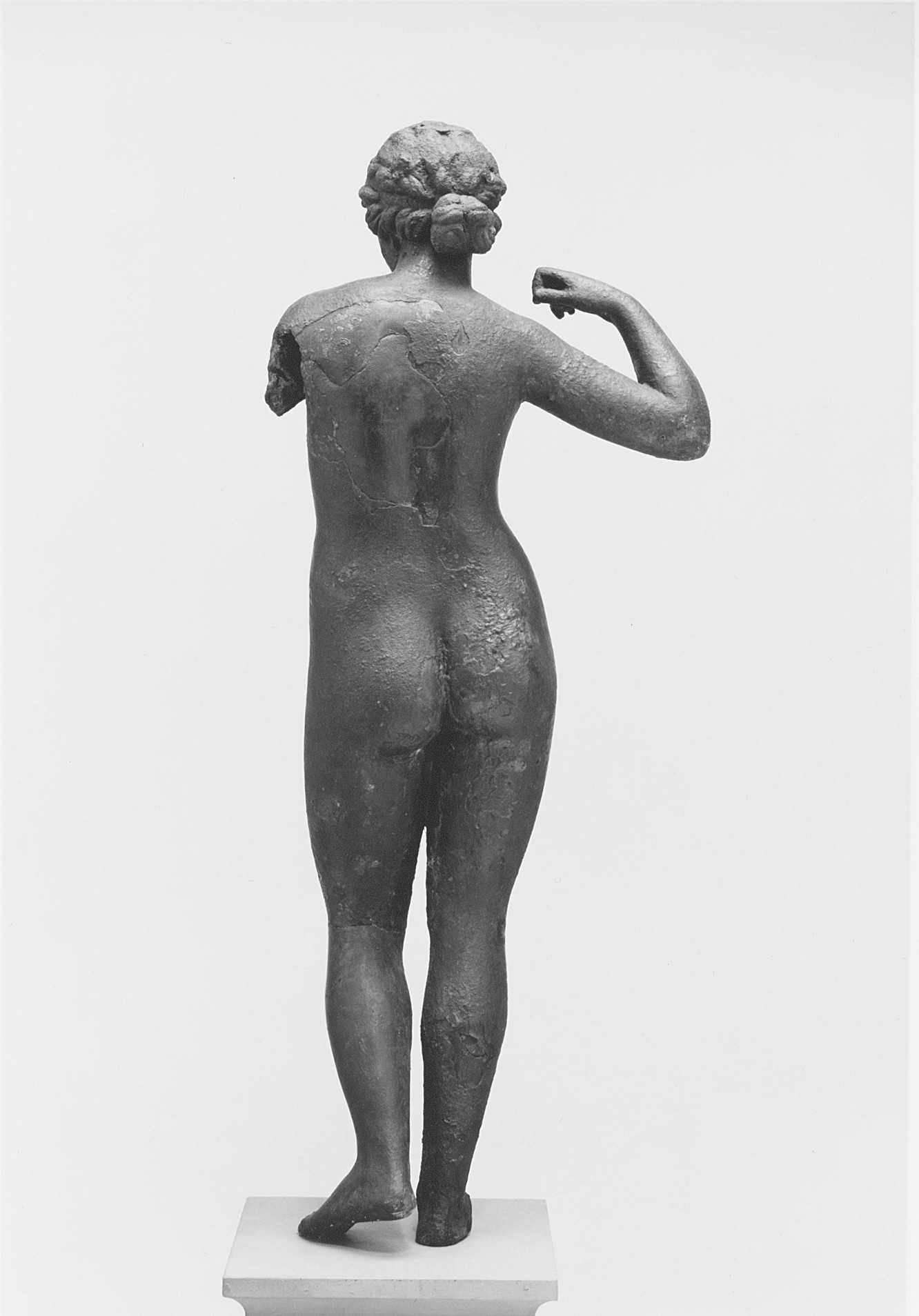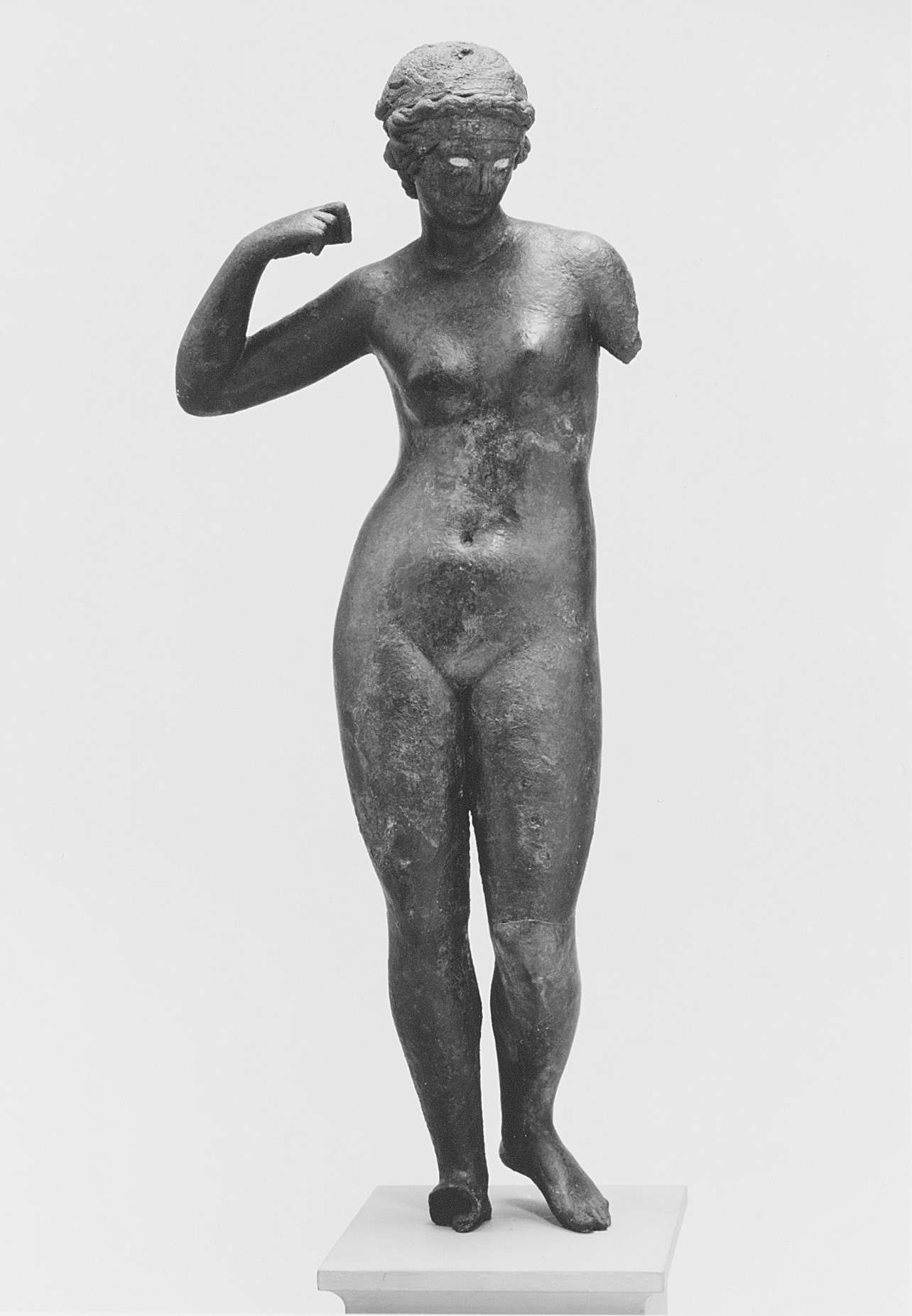Bronze statuette of Aphrodite
The eyes are inlaid with glass paste. The proper left leg from the knee down is restored
The Greeks did not represent the goddess Aphrodite as nude in large-scale statues until the middle of the fourth century B.C., when the sculptor Praxiteles created the famous Aphrodite of Knidos. Representations of the nude Aphrodite in a variety of types and media became widespread by the Late Hellenistic period. This statuette is a variant of the Aphrodite Anadyomene (hair-binding) type. The pose may have been inspired by a work that had a canonical status equivalent to the Aphrodite of Knidos, a famous painting of Aphrodite Anadyomene by Apelles, court painter of Alexander the Great. The variant exemplified here was clearly popular in this size and medium, since several examples are known.
By referencing other copies of this type, one can conclude that the figure's left forearm was raised in a similar manner similar to the right one. She is probably shown in the act of arranging her hair and may even be grasping the ends of the fillet wound about her hair to tie it off. However, since the attribute she held in her hands is missing, various reconstructions are possible. It has also been suggested that the goddess is represented as adorning herself with jewelry.
Due to rights restrictions, this image cannot be enlarged, viewed at full screen, or downloaded.
This artwork is meant to be viewed from right to left. Scroll left to view more.




